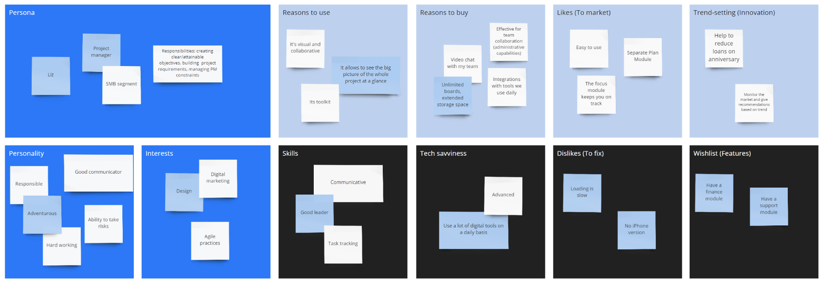How well do you know your customers? Do you know what makes your customers tick?
In his article 5 Techniques to Help You Truly Understand Your Customers, Neil Patel recommends that one of the five strategies you should do to understand your customers better is to create more robust buyer personas.
But what is a buyer persona and how do you make one?
Also called as marketing or customer personas, a buyer persona is described as the fictional representation of your ideal customers. They are used as part of the marketing strategy to answer your customers’ needs and meet their expectations. How old are they? What is their profession? What challenges do they face every day? These are just some questions that would help you identify your target buyer.
If you want to acquire and retain your best customers, you need to dive deeper into their common challenges. From here, your ideal personas gradually emerge.
How Buyer Personas Transforms Your Business
Creating and using a well-constructed persona contributes to a more effective marketing and sales:
- Allows you to address and focus on your customers’ challenges and needs
- Informs you of what you should do to help prospects
- Helps ensure that all your activities related to serving your customers are tailored to the needs of your target buyers.
- Allows you to deliver specific, accurate and targeted information
- Drives sales, increases profits and creates higher lead conversions
- Guides your business and helps you build trust with your customers and prospects.
Listed below are some mind-blowing statistics that proved the power of using buyer personas:
- Using personas have been found to increase: website traffic by 210%, website generated leads by 97%, website generated sales by 124%, Organic search traffic by 55%, online marketing focused efforts by 73%. (Marketing Sherpa)
- 90% of companies have been able to create a clearer understanding of their buyers with personas. (ITSMA)
- 82% of companies using personas have been able to create an improved value proposition. (Cintell)
- 71% of companies with documented personas have been observed to exceed revenues and lead goals. (Workfront)
- Boosts customer engagement almost 6x. (Board View)
- Increases email open rates by 2-5 times. (Bright Talk)
- In the near future, 83% of B2B marketers expect to use personas. (ITSMA)
It is not enough that you simply know your target buyers. You also need to get a full understanding of what makes them patronise your product and trust your company. And the first step to achieving this is to create your buyer persona.
How to Create a Buyer Persona?

Start by asking yourself, “Who are the customers I want to attract with my products and services?” This is just the beginning of your entire buyer persona-creation process, as this involves a combination of internal and external research, which requires time, effort, and strategic thinking to find your ideal personas.
Here is a simple guide to help you get started:
Research your target buyers
- Conduct thorough research on your prospects, customers and those outside your customer base.
- Get their key information such as age, marital status, income, behavior, and interests.
- Gather more details from conducting online/personal interviews or email surveys.
- Use tools such as Social Media Analytics and Facebook audience insights to see those people interacting with your business online.
Identify your customer goals and pain points
- Know your customer’s goals and challenges. Identify how they prioritise their goals, how they solve their problems, and what are the things that keep them from reaching their goals.
- Check with your customer service team to know what questions or complaints they usually get.
Create separate personas
- Customers have different goals and challenges; thus you need to create more than one persona.
- If there is a need to gather more details about the other persona, do another research to help you identify the missing piece of information.
Give your buyer persona a name
- Make your persona like a real person by giving them a name.
- You can also add a photo along with the demographic information to represent your persona completely.
Create personalised emails.
We’ve mentioned above how creating persona-based content can upsurge email open rates by up to 5x. After doing a thorough research, giving your persona a face and details, you’re all set to create and send personalised emails to your subscribers with your ideal persona in mind.
Buyer personas are examples of real buyers who influence decisions about the products, services or solutions you market. They are a tool that builds confidence to persuade buyers to choose you rather than a competitor. – Adele Revella, Leading Buyer Persona Authority
Ready to Create Your Own Personas?
Different people. Different needs. Different decisions. By creating detailed and robust buyer personas, your team can effectively address these differences and do a better job of attracting and serving your potential and existing customers, not just for short-term but for as long as you want to.
At Life Intelligence Group, we make complicated things more fun and easier. If you do not have your buyer personas yet, make it a priority today or else you might miss a lot of wonderful opportunities ahead! Not sure when and how to start creating your personas? Visit our website today for some great templates like the one below:

At Life Intelligence Group, we believe that doing things right at the start will make things easier in the future. Go to https://www.lifeintelligencegroup.com to see how we can help.




